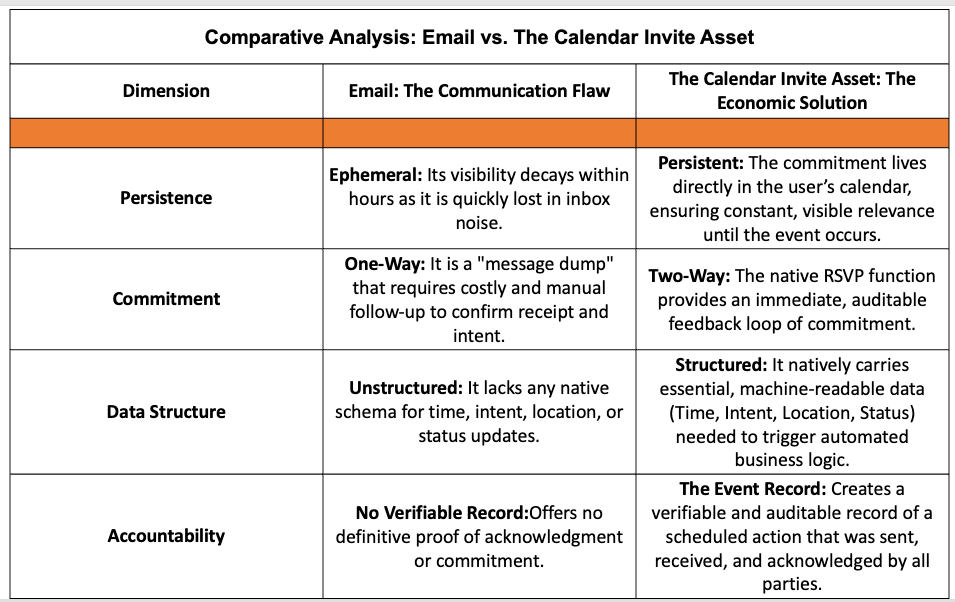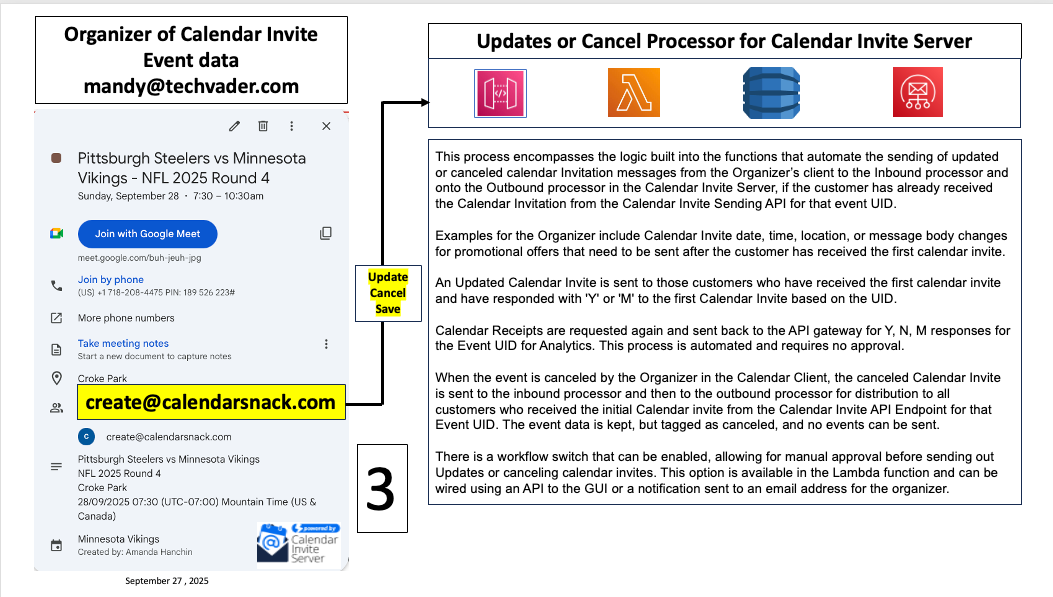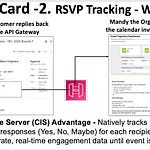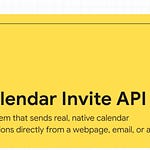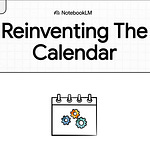Investment Memo: The Economic Case for Calendar Invite Server (CIS) Technology
1.0 The Market Inefficiency: Valuing Time in an Email-Centric World
The core investment thesis presented here is built upon a foundational market arbitrage opportunity: the global economy’s overwhelming reliance on email for time-critical communication. Time is the one truly non-renewable, universally understood resource that underpins every organization. Yet, the primary tool used to manage it is email—a technology fundamentally misaligned with its purpose. Email is for information; the calendar is for action.
This disconnect between purpose and tool leads to tangible business costs, manifesting as operational friction, systemic risk, and billions of dollars in lost productivity. When a patient misses an appointment, a customer ignores a renewal notice, or a legal party fails to acknowledge a court date, the root cause is often the same: a critical, time-bound commitment was communicated using an ephemeral, unstructured, and unaccountable medium that produces no verifiable asset, such as an Event Record. This is not a niche problem; it is a systemic, cross-industry weakness inherent in our digital infrastructure.
Calendar Invite Server (CIS) technology presents the definitive solution to this foundational problem by transforming the humble calendar invite into a robust, auditable, and economically significant digital asset.
2.0 The Solution: Transforming the Calendar Invite into a Digital Asset
CIS technology is not an incremental improvement; it establishes a new economic primitive: the unit of transactional time. By virtualizing, standardizing, and connecting the calendar invite, it evolves from a simple notification into a dynamic, two-way asset capable of carrying significant value and triggering automated workflows. The structural advantages of this new asset class become immediately apparent when compared directly with email.
Comparative Analysis: Email vs. The Calendar Invite Asset
The key takeaway from this comparison is that the structural advantages of the calendar invite, when unlocked by a CIS platform, move critical business communication from the passive realm of simple awareness into the active realm of verifiable commitment and accountability. The creation of the Event Record is the linchpin, providing a definitive, auditable history of a time-based agreement between parties.
This shift from static message to dynamic asset creates immediate, high-leverage opportunities in sectors where the value of time is most acute.
3.0 High-Leverage Use Cases & Projected Return on Investment
The economic value of CIS technology is most potent in sectors where the cost of a missed time-based event is highest. Our analysis identifies two primary value-creation zones where converting email-based workflows into calendar-native commitments generates substantial returns.
3.1 Zone 1: Mitigating Catastrophic Risk in Regulated Sectors
In healthcare and legal systems, where a failure to meet a time-based commitment can lead to significant liability, CIS technology serves as a powerful risk mitigation strategy with a projected ROI potential of 5 to 10 times.
Healthcare: CIS moves critical appointment reminders from a high-risk email workflow directly into the patient’s calendar. The resulting Event Record from an RSVP provides definitive proof of the patient’s awareness and intent to attend. This directly reduces costly no-shows, improves adherence to follow-up treatments, and generates a clear, auditable record essential for regulatory compliance.
Legal & Court Systems: The central challenge in legal proceedings is establishing “proof of notice.” An email can be disputed, but a calendar invite requiring an official RSVP creates an Event Record that acts as a digital receipt for due process. This capability virtually eliminates costly missed court appearances and filing deadlines, embedding operational accountability at the core of the legal workflow.
3.2 Zone 2: Monetizing Recurring Time in Commercial Sectors
For businesses with recurring revenue models or regulated service cycles, such as SaaS and utilities, CIS technology provides a direct lever to enhance revenue and certainty, delivering a projected ROI of 3x to 6x.
SaaS & Managed Services: Rather than sending an opaque renewal email, a CIS-powered system delivers a “Lifecycle Invite” for the renewal date. This asset lives in the customer’s calendar, transforming the billing cycle into a transparent commitment. The resulting Event Record provides valuable data for revenue forecasting, while the simple shift reduces churn and dramatically increases revenue certainty.
Energy & Utilities: Communicating service windows or outages via “Service Window Invites” gives providers a persistent channel into their customers’ schedules. This proactive communication reduces inbound support calls, lowers regulatory fines, and builds customer trust. The underlying Event Record provides auditable proof that notice was delivered and acknowledged.
These specific applications demonstrate immediate financial and operational returns; however, the long-term value emerges when organizations leverage this technology at a strategic, enterprise-wide scale.
4.0 Strategic Implications: Time as a Foundational Automation Primitive
Beyond its communication function, CIS technology is a powerful data-generation platform. The aggregate data from Event Records creates what we term “the telemetry of commitment,” which becomes a new automation primitive for building workflows based on verifiable action, not just passive information.
For regulators and auditors, the documented RSVP provides “Evidence of Awareness.” A definitive “yes” or “no” response to a time-critical notice creates a superior, auditable Event Record that mitigates non-compliance risk far more effectively than an unreliable email “read receipt.”
Marketing’s Most Persistent Channel. By deploying “Flash Sale & Loyalty Invites,” marketing teams can create offers that live persistently in the customer’s calendar. An offer tied to a specific window is no longer a fleeting email but a constant, visible reminder, giving it a level of exposure and urgency that traditional digital campaigns can never match.
The Telemetry of Commitment. At scale, CIS technology functions as both a communication channel and a source of valuable telemetry. By tracking RSVP rates and status changes, organizations gain deep insights into engagement scoring and predictive attendance. This data enables proactive intervention; for example, if a key account’s team members decline a critical onboarding invite, sales can engage personally to preempt a contract risk before it escalates.
These strategic capabilities pave the way for a new economic model built not on message volume, but on the quality and verifiability of commitments.
5.0 Investment Thesis: The Economics of Commitment
The single most significant oversight of the digital age is managing the economy’s most valuable asset—time—with its least evolved communication tool—email. This structural inefficiency represents a market-wide arbitrage opportunity for platforms that can securitize time-based commitments.
Calendar Invite Server (CIS) technology provides a clear and direct pathway to capitalize on this opportunity. It empowers organizations to transform nebulous intentions into verifiable commitments and static messages into dynamic, time-aware digital assets powered by the Event Record. As demonstrated by the high-leverage use cases in regulated and commercial sectors, the ROI is tangible, immediate, and substantial.
Investing in CIS is not merely an investment in optimizing scheduling; it is an investment in owning the core infrastructure for verifiable commitment. The market opportunity lies in capitalizing on the fundamental shift from sending more messages to sending fewer, smarter, time-aware commitments.
What vital, time-sensitive workflow is your organization still relying on to overcome the structural inefficiencies of an email message?


